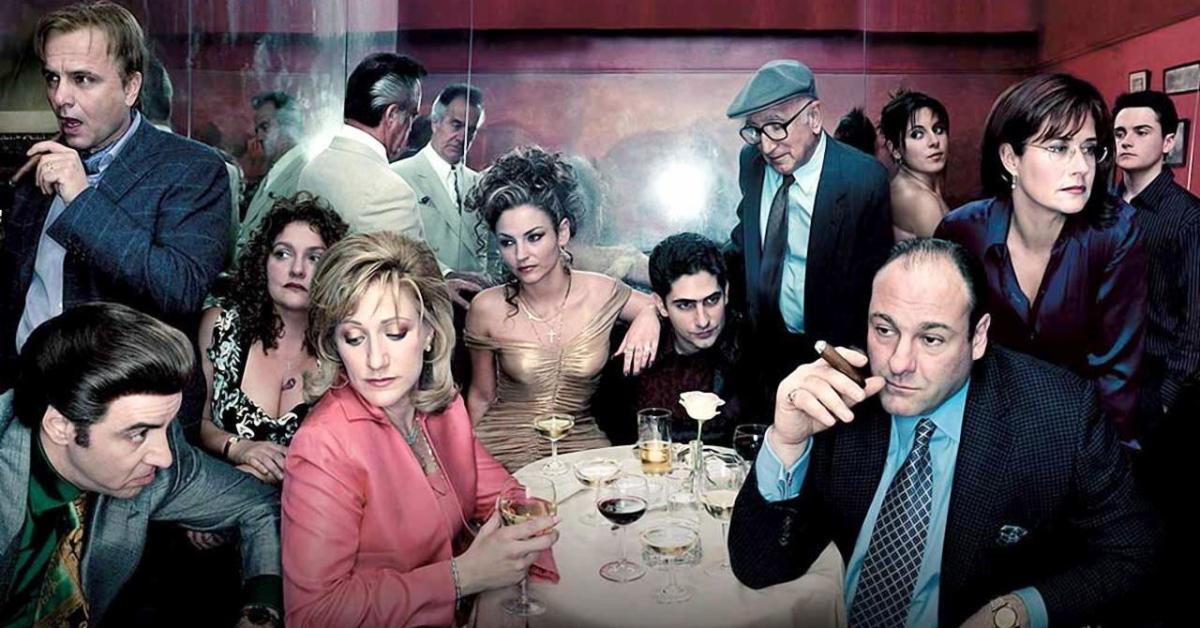In this Lug post, Andy Clark discusses his experience conducting research for the Scottish Government’s Cabinet Secretary for Justice. Along with a team of researchers, he contributed to, and co-authored, a major report focused on community experiences of Serious Organised Crime in Scotland. He reflects on utilising oral history methods to examine current experiences and problems in relation to organised crime, and contributing to a policy report.
Organised crime is the form of criminality most easily made accessible and glamorous to a broad audience with little direct interaction with lived experiences. Hollywood has The Godfather, TV land has The Sopranos and Breaking Bad, and it is a genre that has undergone significant growth in the last number of years. Compare the scenes from the aforementioned programmes with gritty murder dramas and this distinction is even more apparent. Organised criminals – gangsters – live a life of luxury with flash

The Sopranos is one of many TV programmes that show the glamorous side of organised crim
cars, readily available drugs, big houses, a string of lovers, and all of the arsenal required to maintain their way of life. Those living alongside them are passive bystanders.
While organised crime in the UK doesn’t quite get the same extent of Hollywood treatment, the popular narrative remains one of mystique and luxury. Press articles overwhelmingly focus on ‘turf wars’, the houses of known gangsters, the bars and nightclubs they own or frequent and their links with the ‘legitimately’ rich and famous. Those who profit from other people’s suffering are glamourized because of the lives that their work allows them to lead.
Challenging this dominant narrative is inherently difficult for the range of statutory agencies that face the real consequences of organised crime. Moreover, it can be challenging to convince young people on the cusp of involvement that the reality differs substantially from such representations. It was for this reason that the Scottish Government launched a research project specifically aimed to focus on the community experiences of serious organised crime. The research was qualitative in approach, moving beyond narratives of gunfights and high-end drug deals to focus on lived experiences. I was appointed as the sole full-time Research Fellow on the project, and it was my role to work with communities impacted by organised crime, conduct interviews, and engage with young people, community workers and volunteers.
The localities that served as case studies for the research were identified based on a range of socio-economic factors and intelligence data provided by Police Scotland. These communities are identified only through broad indicators to avoid additional stigmatisation and marginalisation. Over a 12-month period, I was largely based within the communities, seeking to gain an understanding of narratives beyond populist discourses that focus on issues of poverty, addiction, and crime.
The data collected through this project identified a number of significant themes in understanding the lived experience of organised crime. For many, serious and organised crime is omnipresent in their day-to-day lives, with minimal direct relationships but substantial indirect impacts. Organised crime groups, local firms, families and faces are well known to many in the communities in which they operate. Their activity is well-known and understood, and manifests primarily through on-street drug dealing and occasional violence. Concomitant with the impact within working-class communities, significance was placed on the geographic mobility of those who profit most from criminality. A recurring theme within the narratives of the impact of organised crime in Scotland was the shift of ‘Mr Big’ from housing schemes to suburbia – yet the stigmatisation of criminality remains focused on those communities most harmed through addiction and visible violence.
The interviews demonstrated that the notion of organised crime as being tied-up with flash cars, easy cash, and a luxurious lifestyle is a long-standing and difficult to overcome myth. For the majority of those involved in organised crime – some from as young as six years old – they are pulled into criminality through vulnerability including youth, unemployment, abuse, debt, and addiction. Organised crime groups also have a greater understanding of individual and communal vulnerability than many support agencies who have suffered substantially through austerity politics. A key headline from the report was the speed at which organised crime groups recognised the impact of the Bedroom Tax on those struggling to maintain their housing payments.
Understanding the impacts of serious organised crime on working class communities presents a range of challenges to researchers and policy makers. Whereas gangsters are often glamorised, the reality for those who find themselves pulled in is substantially different. As one participant observed, it is the final 10 minutes of gangster films – arrest, confiscation and death – that is the reality. My role as an oral historian working on this project allowed for a longer-life analysis of the community impact of serious organised crime. It allowed for an examination of the impacts of organised crime across the lifecourse, from childhood experiences through school, employment, marriage, parenthood, retirement, and old age. It enabled the research to assess the ways in which changes in political approaches, economic structures and urban development have influenced and changed the role of organised crime groups within communities. Life history interviews were an essential tool in moving the discussion of serious organised crime beyond flash cars to understand the lived experiences of vulnerability, criminality, and stigmatisation.
It is hoped that this research and these perspectives and narratives will help to shape a ‘bottom-up’ approach to mitigating the impacts of criminality on the most vulnerable communities in Scotland.
